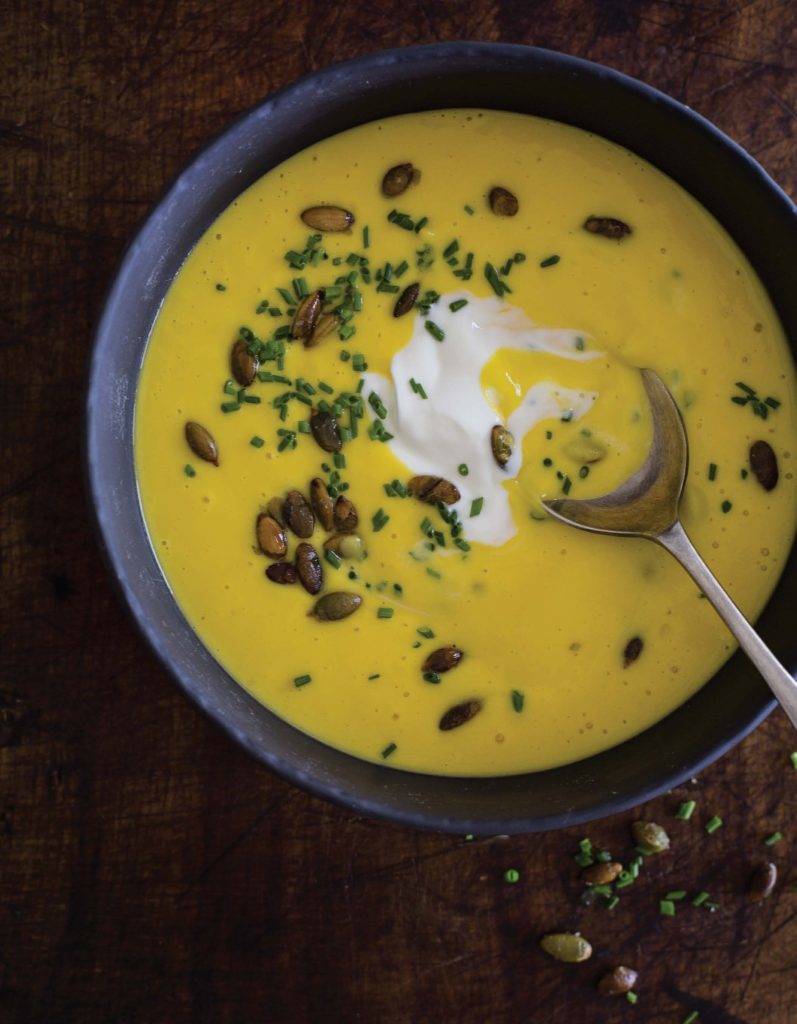Sous Vide Spotlight: Lisa Fetterman, CEO of Nomiku

We are very excited to bring you another featured Sous Vide Spotlight! We recently had the opportunity to sit down with Lisa Fetterman, Founder and CEO of Nomiku, to discuss her company and the sous vide market. Nomiku is one of the few major players in this industry to help revolutionize the affordable sous vide immersion circulators. Nomiku’s creativity is proven by their successful Kickstarter campaign in which over 5,000 backers pledged over $750,000 for the new WiFi capable device. Production and distribution are still underway for many of these devices as they work to fulfill the huge customer demand. In the meantime, take a look at our featured interview with Lisa, a sneak peak to her new sous vide cookbook, and two incredible recipes!
Interview with Nomiku’s Lisa Fetterman
Congratulations on being included in Forbe’s 30 under 30 list! What motivates you as an entrepreneur? Is this what you’ve always wanted to do?
Lisa: Thank you! It’s an honor I do not take lightly and it definitely motivates me to work harder. I’ve always wanted to eradicate every obstacle people have between them and a delicious plate of food. I’d do whatever it takes to do that on the largest scale whether that means being an entrepreneur, author, hegemon— haha, it’s a means to a big vision I’ve always had about how everyone deserves to eat the most delicious food possible.
What is Nomiku’s story?
Lisa: My cofounder and husband Abe and I met at the gym! They set us up. Abe was getting his PhD in Plasma Physics at the time from Princeton. I was working at restaurants like Babbo and Jean Georges in New York. We had food in common and I told him I was saving up money to buy this huge hulking piece of laboratory equipment. He perked up and said, “Oh! We can just make one together!” We started making them for all of our chef friends and then moved on to teach classes at maker spaces and sell DIY open-source sous vide kits. The rest is history!
There have been a few new immersion circulators on the market recently. What makes Nomiku stand out from the rest?
Lisa: The current market is amazing, sous vide is growing faster than the microwave did when it first came out and that’s saying a lot. Microwaves got adopted faster than the cellphone, internet, and computer— sous vide is outpacing all of them! Nomiku is the smallest and most powerful immersion circulator and we’re the choice of top chefs at restaurants like Atelier Crenn, Saison, Restaurant at Meadowood, Cockcomb… etc etc. We’re also set apart by our social network EatTender, it is our app that controls our machine and lets our community make and share their own recipes, it’s the largest sous vide community on earth.
Do you expect Nomiku to stay within the sous vide industry specifically? Or will the company branch out into the overall growing connected kitchen market?
Lisa: Nomiku means eating and drinking in Japanese. We’re here to make what it takes to get people to cook and eat their best. We will make whatever it takes to get people there!
We absolutely love Nomiku’s no-prep ready to heat sous vide meals. Are there any plans on expanding this service outside of San Francisco?
Lisa: Yes! We’d love to have it go national. For now we’ve got to test in SF. Go to eat.nomiku.com and check it out!
Finally, what’s your favorite/go-to sous vide meal?
Lisa: Oh daaaaaaannnnng. I’d say salmon because it only takes 20 minutes!
Sous Vide at Home Cookbook

We had the wonderful honor of taking a sneak peak at Lisa Fetterman’s new cookbook, Sous Vide at Home: The Modern Technique for Perfectly Cooked Meals. This is without a doubt the best sous vide cookbook out there. Wonderfully photographed images leave your mouth watering and well-written, simple directions make this suitable for both novice and chef-level cooks. Better yet, the ingredients aren’t crazy things that can only be found at specialty stores. Much of the recipes also piggyback off one another, which is an awesome way to really increase your cooking skillset and not rely on store-bought items.
Sous Vide at Home is currently available for pre-order on Amazon with an expected release of November 1, 2016. Take a look below at two featured recipes from the book!
CREAMY WINTER SQUASH SOUP
What I love most about using sous vide to make soup is that you can leave it “unsoupervized,” with no risk of it drying out, scorching, or sticking. That means that this flavor-packed soup is extremely low fuss, even more so because there’s no dirty pot to clean. Instead of going the usual baking spices route (that is, the clichéd “pumpkin spice”), I’ve chosen to accentuate the naturally sweet and nutty flavor of the squash with the rich tanginess of crème fraîche, allowing the squash to be the centerpiece of the soup rather than playing second fiddle. Finished with a hit of brightness from fresh herbs and crunchy pumpkin seeds, it’s a knockout dish. This recipe will yield delicious results using nearly any winter squash such as kabocha, butternut, red kuri, or delicata.
SERVES 4 as an appetizer | SOUS VIDE COOKING TIME: 45 minutes (or up to 1½ hours) | ACTIVE PREP TIME: 15 minutes
1 medium-small winter squash (about 1½ pounds)
3 cloves Garlic Confit (page 265), or 1 clove garlic, thinly sliced
1 shallot, thinly sliced
2 cups homemade chicken or vegetable stock (page 267) or store-bought low-sodium broth, or water
1 bay leaf
½ cup crème fraîche, plus more for garnish
Salt and freshly ground black pepper
1 tablespoon chopped chives or fresh tarragon leaves, for garnish
¼ cup salted roasted pumpkin seeds, for garnish
DO-AHEAD STRATEGY
The cooked squash mixture (not yet pureed) can be chilled in the bag in an ice water bath (see page 14) for 20 minutes and then refrigerated for up to 1 week (set the bag on a tray or in a bowl in case of leakage) or frozen for up to 2 months. Hold off on adding the crème fraîche until after reheating the squash mixture. When you’re ready to serve the soup, reheat the
squash in a 70°C (158°F) water bath for 30 minutes and then puree it before adding the crème fraîche.
Preheat your sous vide water bath to 85°C (185°F).
Peel the squash, then halve lengthwise and scrape out the seeds. Cut the halves lengthwise in half again. Turn the squash cut side down and cut crosswise into ½-inch-thick slices. Place the squash pieces, garlic, shallot, stock, and bay leaf in a gallon-size freezer-safe ziplock bag and seal using the water displacement or table-edge method (see page 12). I recommend the latter method for recipes with a relatively large amount of liquid.
When the water reaches the target temperature, lower the bag into the water bath (making sure the bag is fully submerged) and cook for 45 minutes.
Remove the bag from the water bath, discard the bay leaf, and pour the contents of the bag into a blender. Blend on high speed until the mixture is completely smooth. Add the ½ cup crème fraîche and pulse briefly to incorporate, then season with salt and pepper.
To serve, divide the soup evenly among four warmed individual bowls. Garnish each serving with a dollop of crème fraîche, and a scattering of chives and pumpkin seeds.
SALMON WITH MISO-FENNEL SALAD
If you’ve never eaten sous vide salmon, prepare to be wowed. This is not the dry, stringy salmon you’ve had at wedding buffets; the buttery texture will convert even the finicky. I find this the ideal way to enjoy salmon, but if you prefer a firmer, more traditional texture and opaque color, cook the salmon for the same amount of time at 60°C. In this recipe, the finished salmon gets topped with a sprinkle of shichimi togarashi, aka “seven-flavor chile pepper,” a Japanese spice blend that typically includes sesame seeds, citrus zest, and seaweed in addition to coarsely ground dried chile. If you cannot find it, a mixture of toasted sesame seeds and cayenne pepper can replace it here, as the idea is to add a kick of flavor, color, and crunchiness to the custardy salmon.
SERVES 4 as a main course | SOUS VIDE COOKING TIME: 20 minutes (or up to 30 minutes) | ACTIVE PREP TIME: 20 minutes, plus 20 minutes to brine
2 cups water
¼ cup kosher salt
1 tablespoon sugar
2 pounds salmon fillet (pin bones removed), skin on or off, cut into 4 equal pieces
1 teaspoon canola or other mild vegetable oil
MISO VINAIGRETTE
1½ tablespoons white miso
1 tablespoon fresh lemon juice
1½ teaspoons Dijon mustard
1½ teaspoons honey
½ teaspoon peeled, grated fresh ginger
2 tablespoons canola or other mild vegetable oil
½ teaspoon toasted sesame oil
2 fennel bulbs, thinly shaved lengthwise on a mandoline (about 3 cups)
2 cups loosely packed pea shoots (pea greens) or other mild greens (such as mâche or spinach)
1 teaspoon shichimi togarashi, or toasted sesame seeds with a pinch of cayenne pepper added
DO-AHEAD STRATEGY
This isn’t a dish that I recommend cooking in advance, unless you intend to serve it cold. If you do, remove the fish from the water bath and immerse it an ice water bath (see page 14) for 15 minutes, or until completely cold, and then store in the bag in the refrigerator for up to 2 days.
Preheat your sous vide water bath to 52°C (125.5°F).
While the water is heating, combine the water, salt, and sugar in a wide bowl and stir until the salt and sugar are completely
dissolved. Place the salmon pieces in this brine and refrigerate for 20 minutes.
Remove the salmon from the brine and rinse it under cold running water to wash off the excess. Pat the salmon dry with a paper towel. Rub the salmon pieces evenly with the canola oil. Place the salmon in a single layer in a gallon-size freezer-safe ziplock bag and seal using the water displacement method (see page 12).
When the water reaches the target temperature, lower the bagged salmon into the water bath (making sure the bag is fully submerged) and cook for 20 minutes. When the fish is done, it will have turned an opaque pink and will be very delicate, so handle it with care or it will fall apart.
While the fish is cooking, make the miso vinaigrette. In a small bowl, whisk together the miso, lemon juice, mustard, honey, and ginger until blended. Slowly pour in the canola and sesame oils in a thin, steady stream while whisking continuously to emulsify. Set the vinaigrette aside.
When the salmon is ready, gently remove it from the bag and transfer it to a platter or tray. If the salmon pieces were cooked with the skin on and you would like to serve them without the skin, it is extremely easy to remove it now. Simply pull it off, starting at one edge and lifting it off in one piece.
Just before serving, toss the fennel and pea shoots with the vinaigrette, starting with half of the vinaigrette and adding more to taste. If you like salads lightly dressed, you won’t want to use all of it.
To serve, arrange the salad on four individual plates, place the warm salmon on top, and sprinkle with the shichimi togarashi.
Reprinted with permission from Sous Vide at Home, by Lisa Q. Fetterman, copyright © 2016, published by Ten Speed Press, an imprint of Penguin Random House LLC. Photographs copyright © 2016 by Monic Lo.


